Web Development Life Cycle: A New Methodology for Web Development
The emergence of the Web Development Life Cycle (WDLC) has revolutionized the way websites and web applications are built. This blog shares the stages and technologies used, helping businesses create successful projects.

Web development has become an indispensable aspect for businesses to succeed in today's digital world.
The demand for high-functioning websites and online applications has increased dramatically as businesses realize how important it is to meet their customers' digital expectations.
The Web Development Life Cycle is a new methodology that revolutionizes the way websites and web applications are built.
The Web development life cycle stages are analysis, planning, design and layout, content, development, testing, implementation and maintenance.
In this article, we will explore what is WDLC and how it brings order, clarity, and optimal results to the web development process.
According to a survey conducted by Statista, 78% of web development projects that follow a structured development life cycle are completed within the scheduled time frame, compared to only 40% of projects without a defined methodology.
What is The Web Development Life Cycle?
The software and web development life cycle adheres to a specific standard that has to be followed to move in the right direction. There are frameworks, methodologies, modelling tools, and languages involved.
The Web Development Life Cycle is a method that outlines the stages involved in building websites and web applications, whether it is javascript development, python development, or ASP .Net Development. It provides a structured approach, ensuring optimal results throughout the development process.
The 7 Stages of The Web Development Life Cycle –
- Gathering Relevant Information
- Planning - Sitemap and Wireframe
- Design & Layout
- Content Creation
- Development
- Testing, Review, and Launch
- Maintenance and Updation
Read on to learn what stages you need to go through before launching a website:
.webp?width=524&height=524&name=ezgif.com-gif-maker%20(42).webp)
Let's discuss the web development life cycle stages one by one;
1) Gathering Relevant Information
The first stage is the most important in understanding the life cycle approach of website development as it involves learning about the client's requirements. Identify their needs and help them by providing the perfect solution. Have a clear idea about the target audience. What the business goals are, and how the website will be utilized to accomplish those objectives?
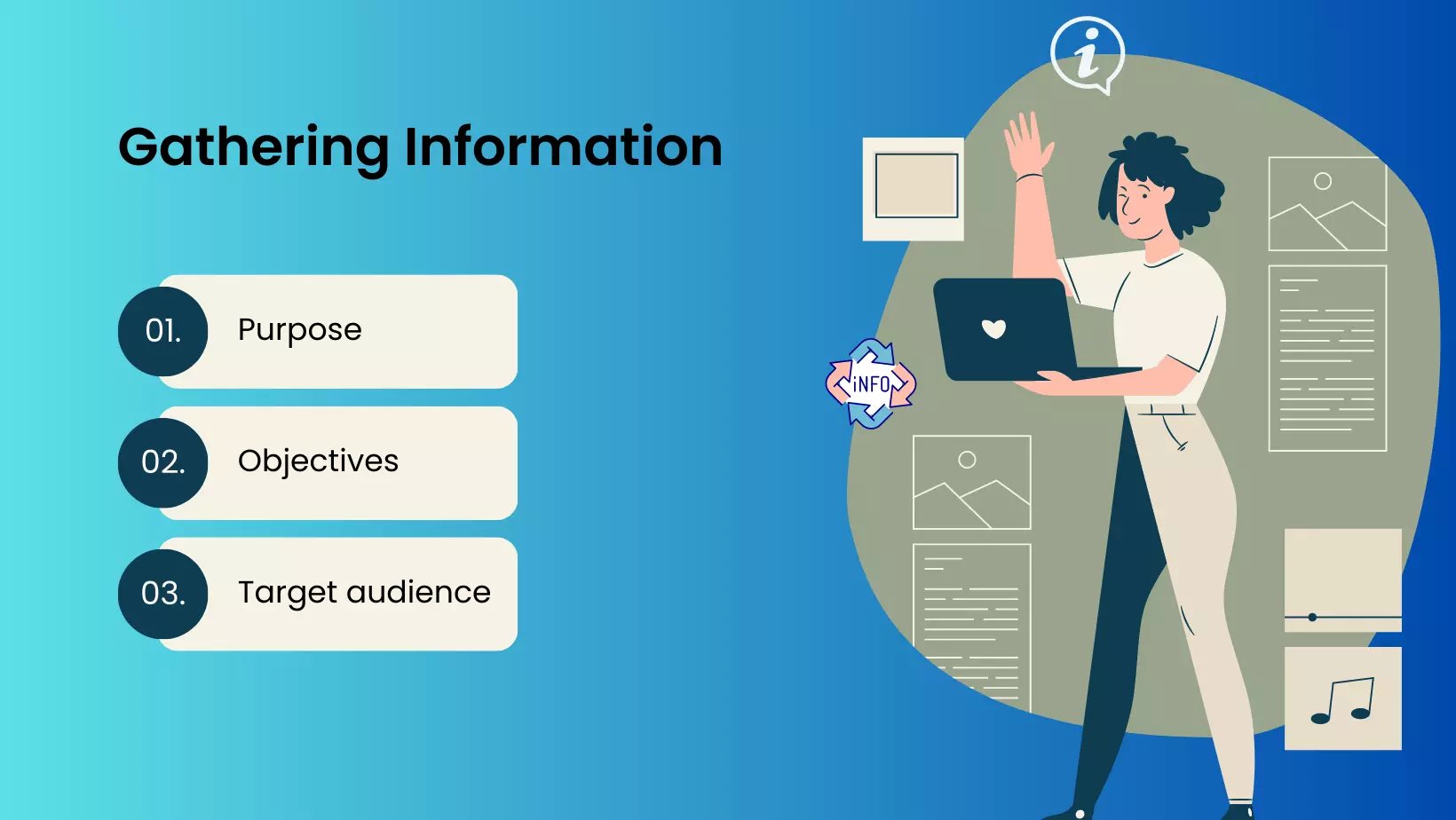
Here are the considerations:
Purpose:
- What is the purpose of the website that the developer will be building?
- What is the actual plan: to provide information solely and sell a product or service?
Objectives:
- What is the main goal of building the website?
- Whether it is informational or promotional?
Target Audience:
Is there a specific group of people that will help in accomplishing your objectives?
During the website design and development process, it is important to visualize what type of people you would like to visit the website. Consider their age, gender, likes, and dislikes. This will certainly help in designing the best website according to their interest.
Content:
- What type of content do you post on the site?
- Is the audience looking for a specific type of information?
- Are they looking for promotions, deals, or offers to avail?
The news portal is different from an entertainment site, and online sites for teenagers are different from adults.
Every website is different from the other, so gathering relevant information regarding the project is very important. So, it is vital to get insights so that an aesthetically appealing website is created.
💡 Related Read: Top 15 Solid Reasons Why Your Business Needs a Website (Bonus Tip Included)
2) Planning - Sitemap and Wireframe
With all the information that has been gathered from stage one, the design and implementation strategies are planned according to the type of website and target audience.
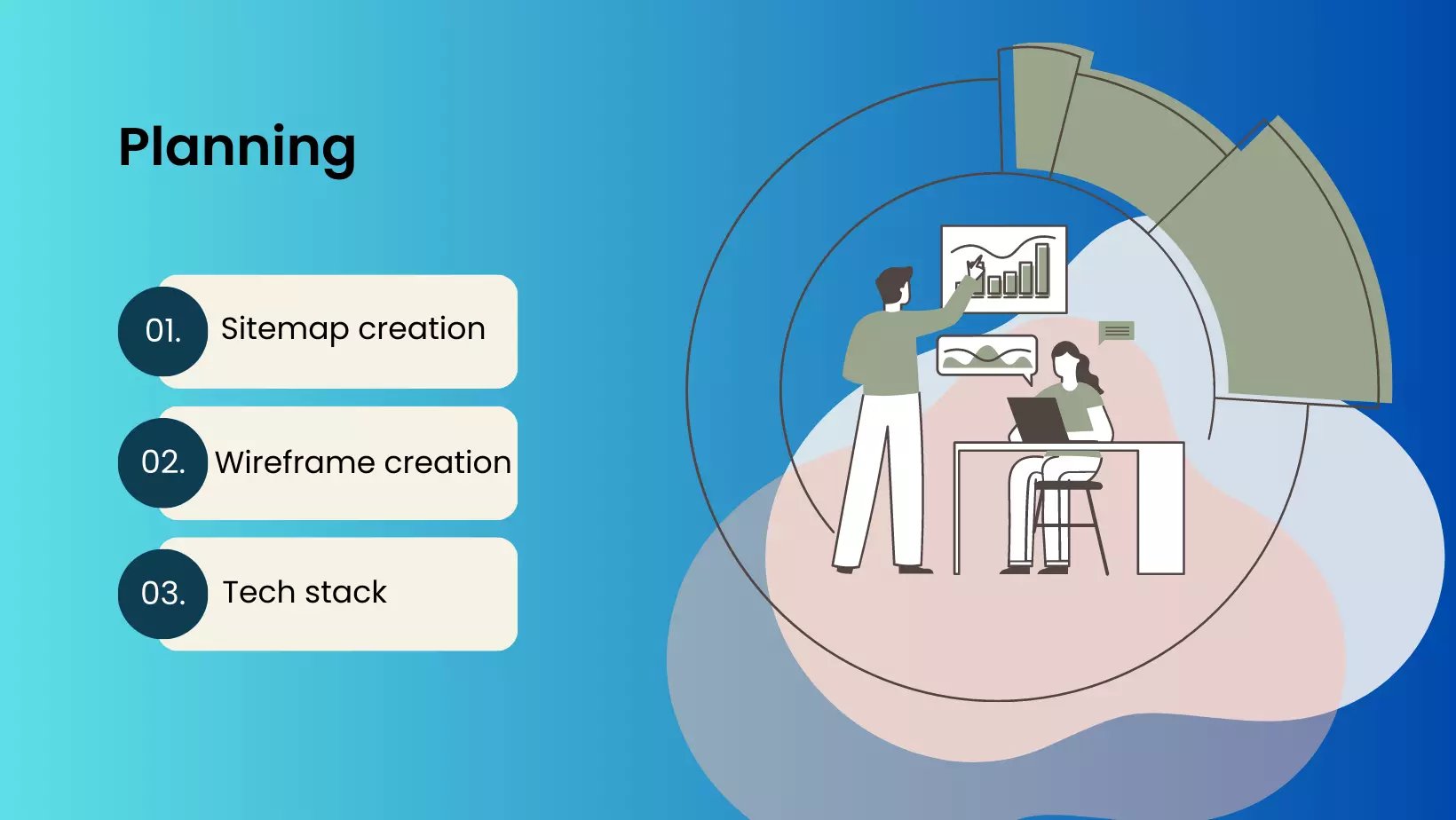
A site map is created in this phase.
For building a full-fledged website having impeccable features and functionalities, it is important to plan wisely. There has to be a detailed list of all the areas of the website and the sub-topics. This is a guide that describes what content will be there on the site, and there is an easy-to-understand navigational system.
Think of the best user interface that is created for easy navigation. The wireframes give an outline of the pages of the website.
Take the help of tools for creating the wireframe. All the planning processes should have the involvement of the client. So, the client has an idea about the blueprint of the project.
3) Design & Layout
Next is to determine the look and feel of the website. In the design phase, it is essential to embed elements like the logo of the company and the colours that help to enhance to the identification of the company on the website.
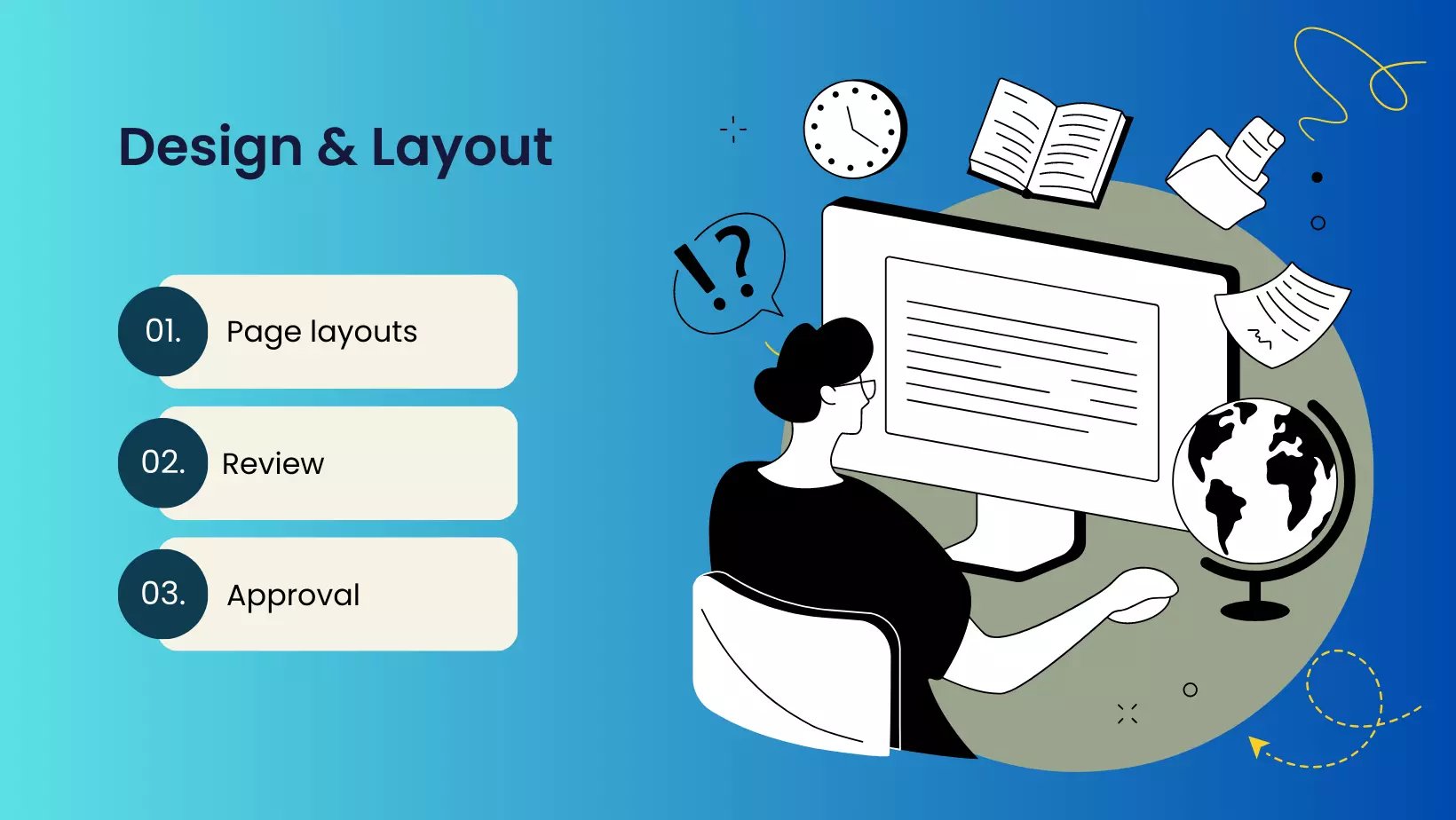
The designer gives life to the graphics, typography, colours, animations, buttons, drop-down and pop-up menus, and more as per the project requirement.
It is the responsibility of the web designer to create one or more than one prototype for the website. This is basically a jpeg image of the final design. Designers give companies access to the workflow so that they can view the progress of the development.
Meeting the demand of the audience with the help of web design is also crucial. If the design is mundane, the website will not be able to capture the user's attention, and this will increase the bounce rate. The elements should reflect the brand image as well as the business vision.
According to recent research, 75% of users make judgments about a company's credibility based on their website design.
Therefore, it's not just about having a functional website but also creating an exceptional user experience that fosters trust and engagement.
💡 Related Post: Website Redesigning Tips
4) Content Creation
No matter how visually appealing your website may be, effective communication with your customers is indispensable.
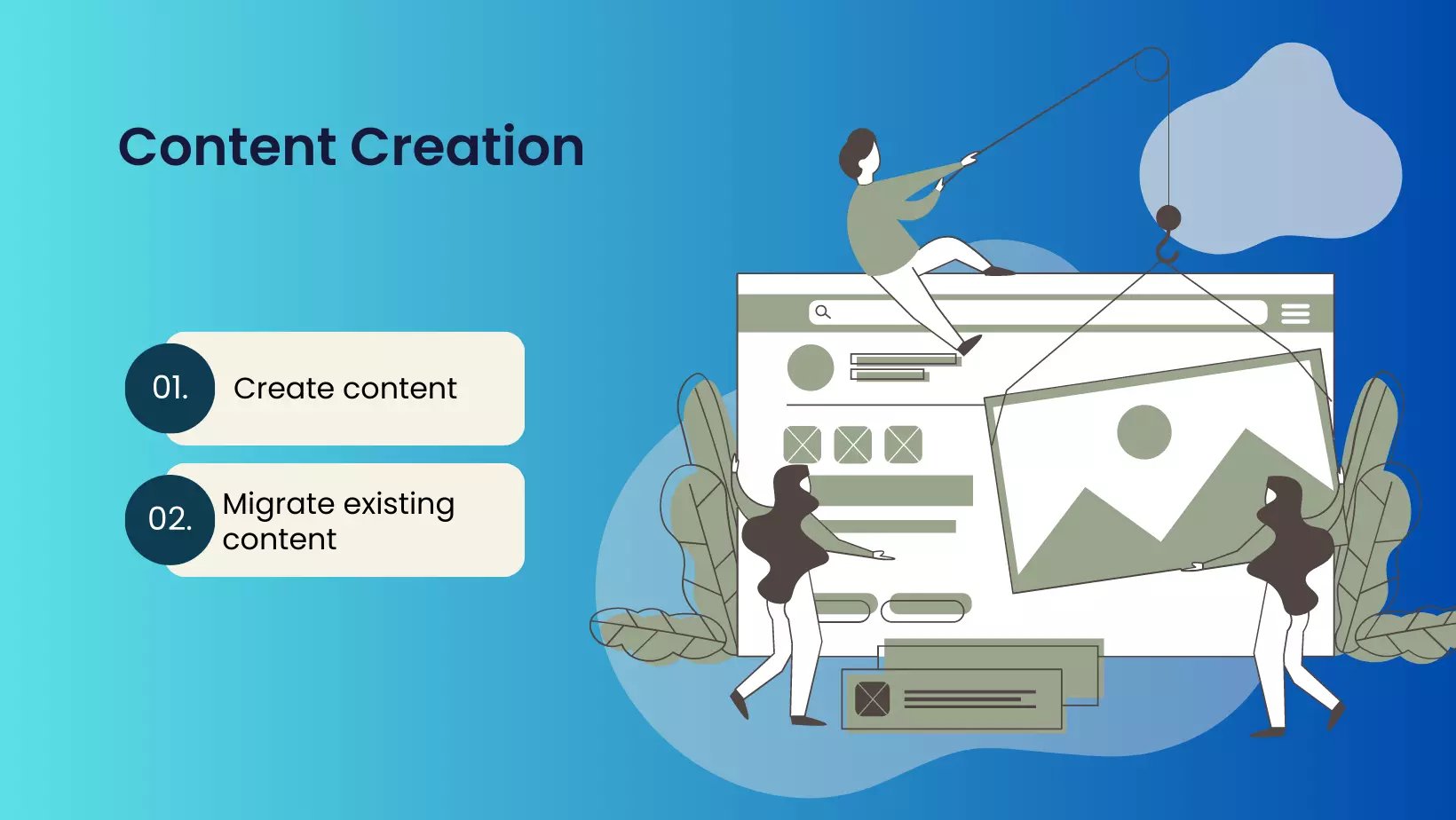
The primary objective of content creation is to establish a communication channel through the user interface. It involves presenting relevant information about your company in an engaging and easily comprehensible manner.
This encompasses the inclusion of:
- Compelling calls-to-action
- Crafting creative headlines
- Formatting the content for readability
- Performing line editing
- Updating the texts throughout the entire web development process.
The content creation stage plays a pivotal role in shaping the branding and marketing of your website or web application. By combining impactful writing with strategic SEO services it helps define the purpose and objectives of your online presence and boosts its visibility.
5) Development
The development is a stage where the website is built while maintaining the essence of the website's purpose. All the graphic elements are taken into consideration and are used to generate a functional website.
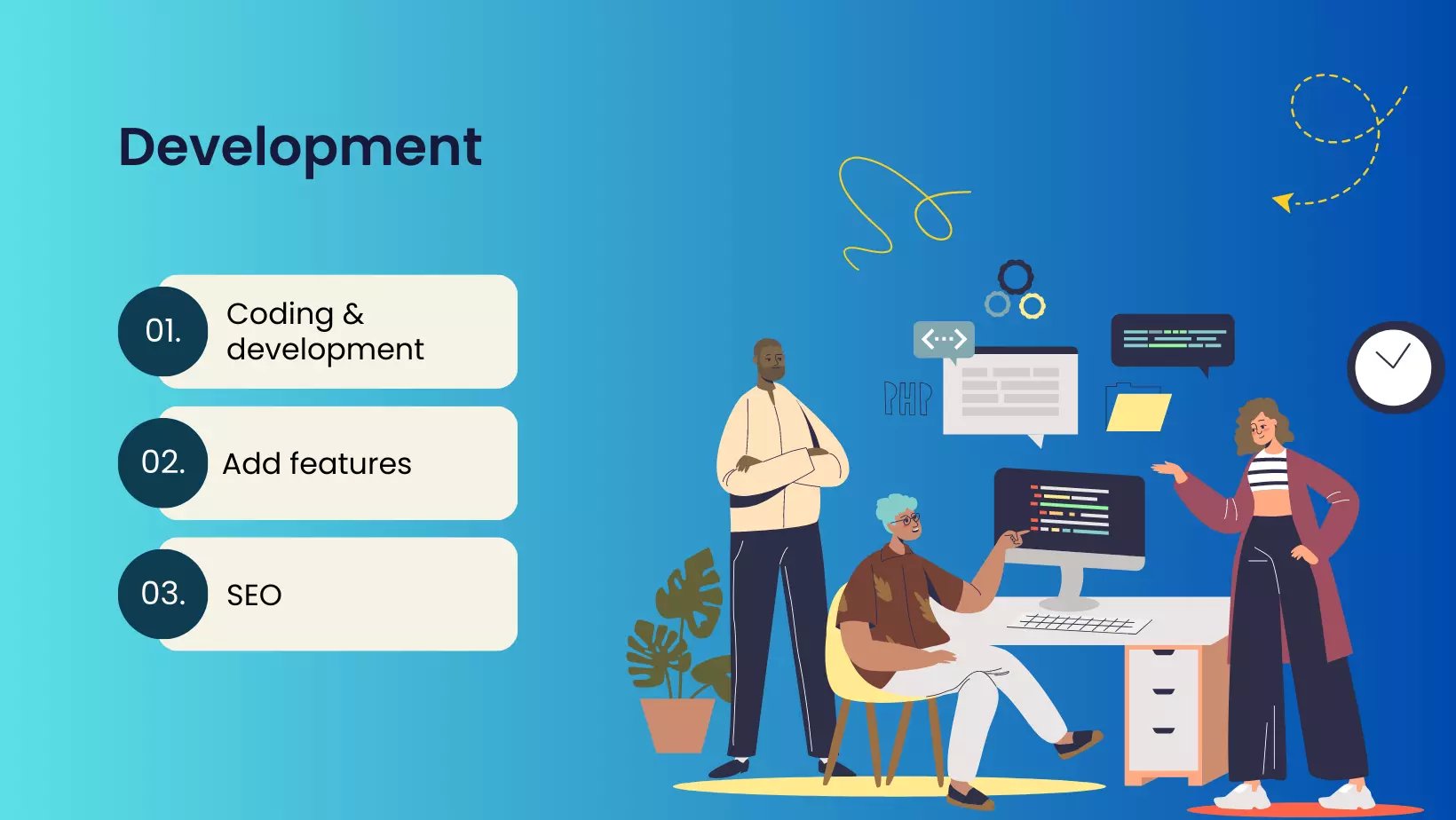
The process begins with first developing the home page, followed by the interior pages. The main focus is given to the navigational structure of the site.
Content Management System, interactive contact us forms, and shopping carts are made functional in this development step. The web design & development company suggests changes that are done after consideration.
Do you know that a successful website needs an understanding of front-end website development and back-end development? This means valid HTML/CSS codes are compiled as per the web standards to enhance the functionality for a larger audience.
6) Testing, Review, and Launch
After the completion of web development, it is tested. The functionality is tested along with the device compatibility.
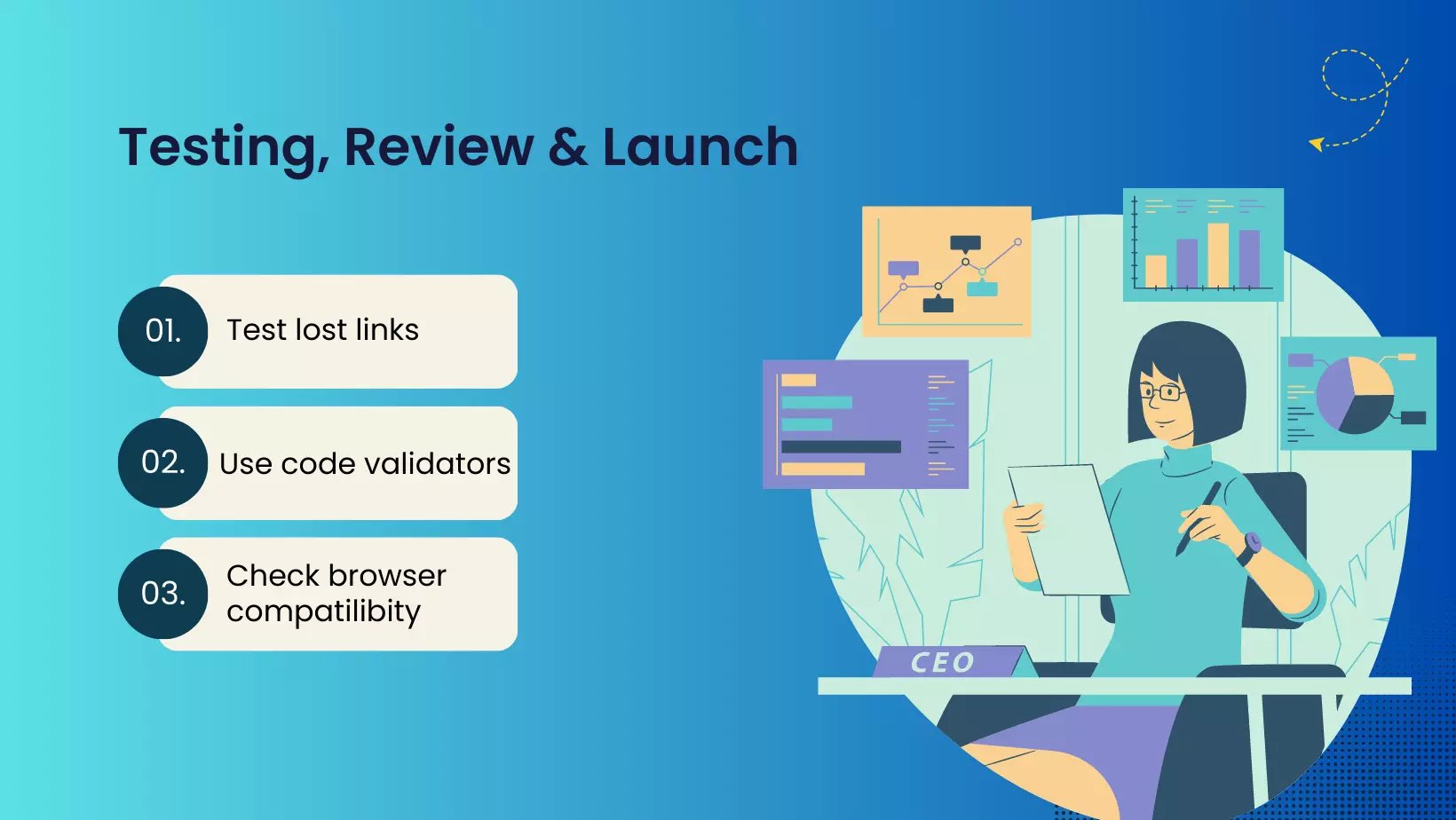
The web designer should be well-versed with the current trends and standards so that the design and development are done accordingly. The technologies used are HTML and CSS. The tester validates the codes written for the website.
When the designer is given the final approval, the website is ready for delivery. The quality assurance team tests for functionality, compatibility, and performance to ensure that the website is ready for launch.
Other testing includes integration testing, stress testing, scalability, load testing, resolution testing, and cross-browser compatibility. Once the green flag is shown, it is deployed to the server using FTP.
7) Maintenance and Updation
The web development stages don't end after deployment. There are many post-deployment tasks that take place. Some elements are changed as per the user's feedback, support, and maintenance.
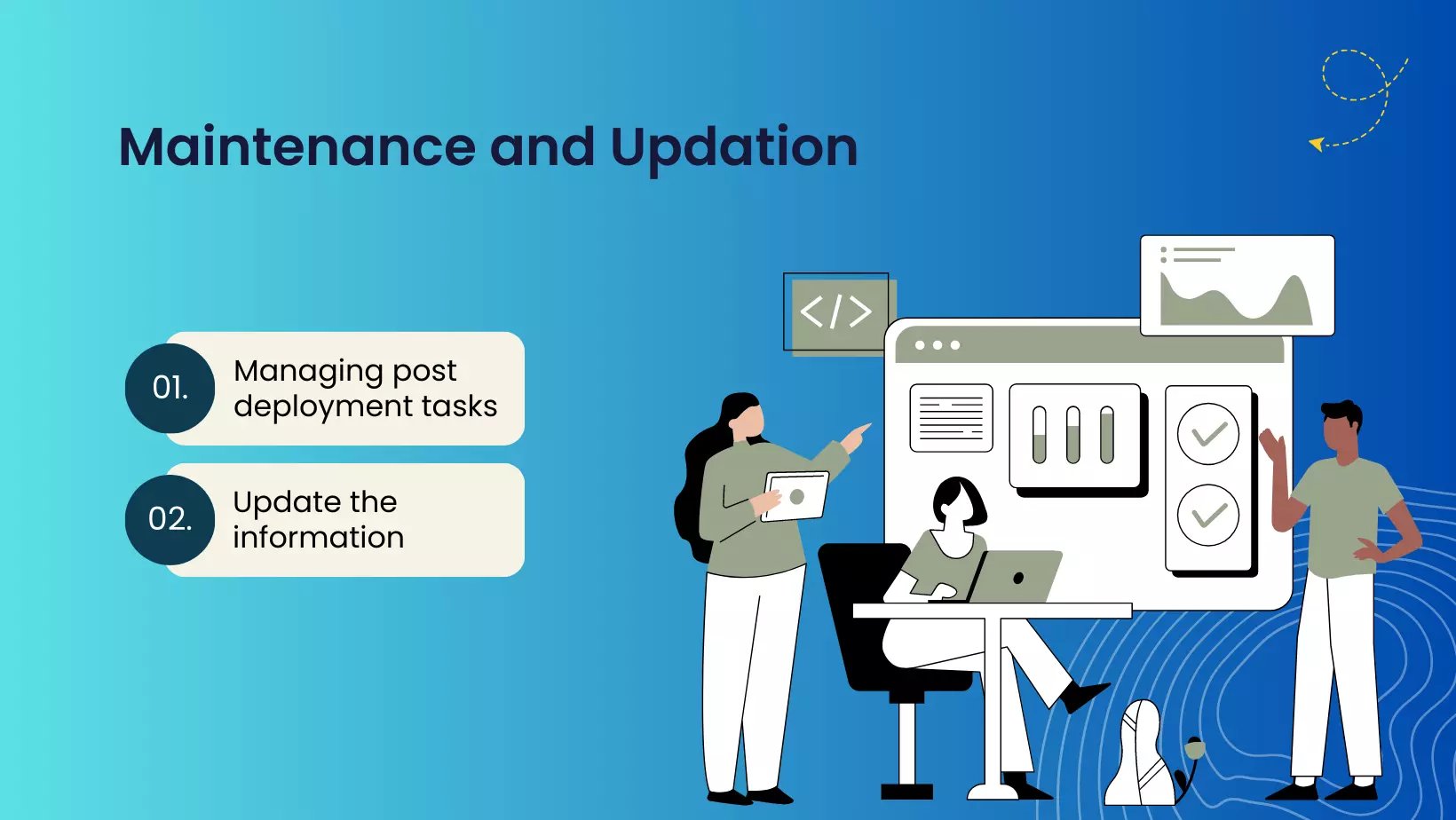
One good way to grab potential visitors and repeat their visits is to keep updating the content and adding new products on a regular basis. The website drives by CMS allows the customer to edit the content.
Technologies Used in The Web Development Process
There are a wide array of technologies, including programming languages, libraries, frameworks, and development tools, that are used to create highly functional websites and applications.
Here we will explore the prominent technologies used in both the front-end and back-end tech stacks:
Front-End Tech Stack:
- HTML: Defines web page structure and content with features like semantic elements, media embedding, form validation, and offline storage.
- CSS: Controls visual presentation and layout, allowing customization of colours, fonts, spacing, animations, and responsive design.
- JavaScript: Enables interactivity, manipulation of HTML and CSS, event handling, animations, and building complex web applications. Popular frameworks like React, Angular, and Vue.js enhance front-end development.
- Front-End Frameworks and Libraries: Bootstrap, Foundation, and Material-UI provide pre-built components and stylesheets for rapid development, responsive grids, and consistent UI.
Back-End Tech Stack:
- Server-Side Languages: PHP, Python, Ruby, Java, and C# handle data processing, business logic, and database operations. They power CMSs, enterprise-level apps, and APIs.
- Database Management Systems (DBMS): MySQL, PostgreSQL, MongoDB, and Microsoft SQL Server efficiently store and retrieve data, ensuring robust management, scalability, and integration.
- Web Servers: Apache, Nginx, and Microsoft IIS handle client-server communication, processing requests, and serving web pages for seamless content delivery.
- API Development: REST and GraphQL facilitate building APIs that enable seamless integration and communication between different systems.
Hire the Best Website Design & Development Company
Web development is a constant journey that can be made better every day. The web development life cycle involves understanding the client's requirements, market research, knowledge about the target audience, planning, design, development, testing, and maintenance.
Hire an outsourcing team of web developers in India that adheres to all the steps mentioned above and develops an aesthetically appealing website.
Frequently Asked Questions
Have a question in mind? We are here to answer.
What are the stages of the Web Development Life Cycle?
![]()
Why is the Web Development Life Cycle important?
![]()
What technologies are used in web development?
![]()
Why should I hire a professional web development company?
![]()


%201-1.webp)


.png?width=344&height=101&name=Mask%20group%20(5).png)
















